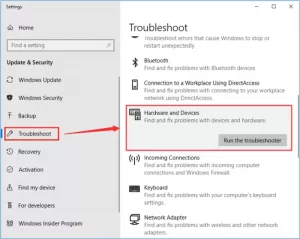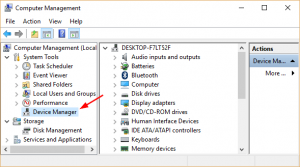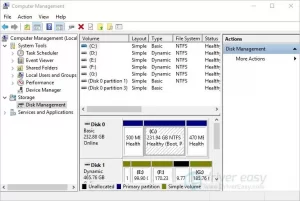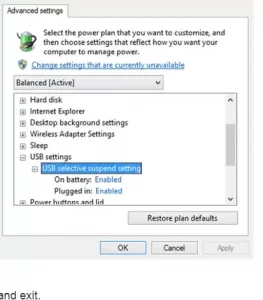How to make recognize an external hard drive in Windows 7, 10 and 11 (8 troubleshooting methods)
Sometimes our PC does not recognize or refuses to recognize an external hard drive, even after confirming a successful connection. This problem is more likely to occur when the device driver is damaged or outdated. Such problems are usually difficult to resolve. You may spend hours but do not find a solution. Try these solutions that we will explain below and see if the problem of not recognizing the external hard drive in Windows 11/10/8/7 is solved or not.
Why is the external hard drive not displayed on the computer?
If the external hard drive does not work, you can unplug it and try another USB port. Also, If connected to a USB 3.0 port, connect it to a USB 2.0 port. If it’s connected to a USB hub, try connecting it directly to your PC instead and see if it works.
The external hard drive is not shown or detected on the PC
Before starting, disconnect the external hard drive from the port and insert it into another port. If it works, your first port will probably have a problem. Otherwise, use another USB. If they work well on both ports, USB probably has a problem.
Note that sometimes restarting the system solves the problem. First of all, restart your system, and if it does not work, the following methods will solve the problem.
How can Windows fix an external hard drive?
To repair an unidentified hard drive, follow these suggestions:
1. Run Troubleshooters
2- Update or reinstall the device driver
3. Create a new partition on your removable drive
Disable USB selective suspend setting
5. Activate and format the drive in Disk Management
Try another USB port (or other PC)
7- Clean the disk and start from scratch
Explain in detail the above steps
1. Run Troubleshooters
The first thing you do is run Hardware and Device Troubleshooter and Windows USB Troubleshooter and see if it helps. Check the hardware / USB devices connected to the computer for any known problems and fix them automatically.
You can search for them through Start Search or access Troubleshooters through Windows 10 Settings Troubleshooter.

2- Update or reinstall the device driver
Press Win + R together to go to Device Manager to open the Run window. Then find the external device from the list. If you see a yellow or red mark in front of the driver, right-click on its name and select “Update Driver Software.”. Also, if you find “Unknown device,” update it. Select “Search automatically for updated driver software” and then follow the instructions to complete the process.

If this does not work, uninstall the driver and then reinstall it.
3. Create a new partition on your removable drive
If you have never connected your hard drive to your PC before and want to connect it for the first time, the drive may not be detected because you did not create any partitions. However, it may be detected by the Windows Disk Management tool. So, check if the disk management tool can find the external hard drive.

Open Disk Management, go to Search and type diskmgmt.MSc and press Enter. If an external drive is found in the Disk Management window list, format it correctly so that it appears the next time you connect it to your computer.
If you see the drive partitionless or not allocated, format it and create a new partition there.
4. Disable the USB selective suspend setting
Disable the optional USB suspension settings if the above methods do not work.
Open Power Options from the control panel and go to Additional power settings. In the next step, click on “Change plan settings.”

Then go to “advanced settings,” find the USB selective suspend setting, and set it to “Disabled.”

Click Apply and exit.
You can also uninstall problematic drivers through Device Manager. Another solution is to change the drive letter of the removable disk or back up all important files and then format the external hard drive using Disk Partition software.
5. Activate and format the drive in Disk Management

You should use the internal Disk Management tool to check if the drive is offline. Open Windows Search (Win + S) and type disk management. When the tool appears in the list, click to open it.
You should be able to see all the connected drives in the list. An item that is not available on a PC appears to be gray. Right-click on it and select enable. You can format the drive to appear in Windows Explorer by doing this finally.
Try another USB port (or other PC)
The USB port may have trouble displaying any hardware. Most laptops and desktops have multiple USB ports, and one of them should work even in the worst case. You can also check in the BIOS that the USB port is disabled; if yes, enable it.
7- Clean the disk and start from scratch
If nothing works on your PC, the best option is to connect to another computer and format the DISK on that computer. When done, reconnect the disc to the computer you want to use.
8- If it still does not work, this method will most likely solve the problem
Probably a problem with the external hard drive if not addressed by the above methods. It is best to use a Driver booster:
Software download link
There are various third-party tools that you can use to install the latest drivers on your Windows 10 PC automatically. A professional driver update software is one of the most efficient options.
You should know from the beginning that a professional tool simplifies driver updates, even for beginners. More precisely, this tool runs automatically to find outdated drivers.
Some of the most common Windows errors and bugs are caused by outdated or incompatible drivers. Lack of an up-to-date system can lead to delays, system errors, or even BSoDs.
Just connect your system to the Internet, open the software as shown below, click on scan, and then click update. Just as easily, all Windows drivers start updating to the latest version:
How do I know if Windows 11/10 detects an external hard drive?
Before you begin, make sure your Windows PC is optimized. Run Hardware Troubleshooter by running Settings app> Update & Security> Troubleshoot> Hardware and Devices> Run the Troubleshooter.
If you can not find it, run the following command in the Windows terminal to launch Hardware Troubleshooter.
msdt.exe -id DeviceDiagnostic
How to repair an external hard drive that does not show files?
If you have just connected your drive, wait a few seconds for Windows to load everything. However, if some time has passed and there is no file, you should run Disk Check software from OEM or CHKDSK on Windows to fix any header or table failure.
Assign a letter drive to the size of the hard disk
It will not be displayed in File Explorer until the drive letter is assigned to the hard disk. To achieve this, you must use the Windows Disk Tool.
- In Windows Search, type Disk, and then click Create and format hard disk listing.
- Find the desired disk and right-click on the volume or partition.
- Select Change Drive Letter and Path.
- Once done, File Explorer should detect it immediately.
If you do not see any volume and everything appears in the black border for the hard disk, it means that the disk has not been initialized. You can right-click on it and create a partition by adjusting the size. Volumes will also be formatted.
How to repair an external hard drive that does not show files?
If the drive is on your PC, but you can not see any images, check if the files are hidden. You can enable the View Hidden File option using File Explorer.
Why did the external hard drive suddenly disappear?
This happens when the connection is not set up correctly. Check that the USB port to which the drive is connected is loose. If so, you need to get a new pair of wires that you can connect to your PC. If this is not the case, maybe your hard drive has a problem, and you should check it out.
Where did my SSD files go?
If you do not delete a field from your SSD, it will not disappear automatically. Check if you are using a program that causes the file to be moved from this drive to another location. Some external drives also have a hardware lock that blocks any changes. If so, enable it.











